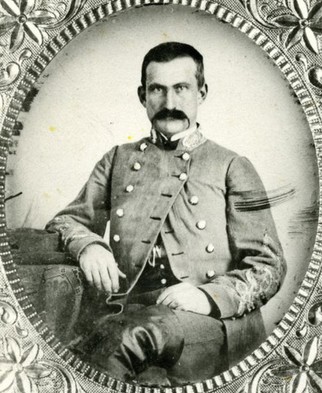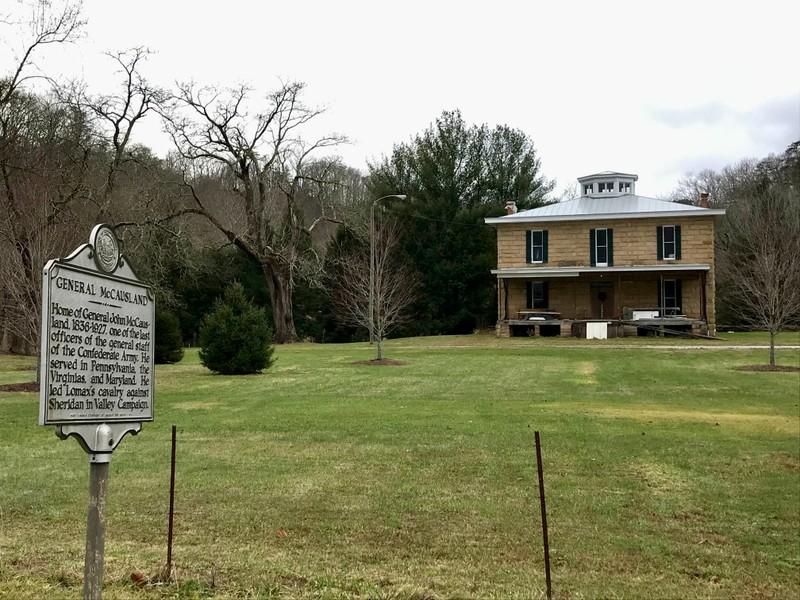Grape Hill (John McCausland House)
Introduction
Text-to-speech Audio
Images
John McCausland- Photo courtesy of e-WV, The West Virginia Encyclopedia


Backstory and Context
Text-to-speech Audio
Prior to becoming a Confederate General in the Civil War, John McCausland went to the Buffalo Academy in Putnam County, West Virginia, and also the Virginia Military Institute. He later became an assistant instructor at VMI and a colleague to Thomas (later known as "Stonewall") Jackson. At the start of the Civil War, he held the rank of captain and was then promoted to Colonel. McCausland was heavily involved in the Civil War and in 1864 was commissioned a Brigadier General. One particular event in the war that he took part in was the action at Chambersburg, Pennsylvania. Troops were to raid Pennsylvania in retaliation for destruction in the Valley of Virginia. The town was going to be demanded to pay $100,000 in gold or 500,000 in federal greenbacks and if not, be burnt down. McCausland stated what was demanded and the town refused. Upon General Jubal Early's orders, McCausland burned Chambersburg, Pennsylvania to the ground on July 30, 1864.
After the war ended, McCausland returned to Henderson in Mason County, West Virginia. He grew afraid of the reaction to his actions at Chambersburg and fled to England, France (where he joined the French Foreign Legion), and even served in Mexico. In 1867, McCausland came back to the U.S. The year 1885 found him building a new home near Pliny, West Virginia. After completion of his residence, McCausland became a farmer. He married his wife Charlotte in 1878 and they had four children. He lived in Pliny until his death in 1927. General McCausland is buried at Henderson in West Virginia.
Grape Hill is made from sandstone that was obtained from the General’s property. The entire construction of the house was not terribly expensive, but many believed that the house cost McCausland a great deal of money to build it, even saying that money from Chambersburg was used. The home was built in 1885 and is a two-story house with a five-bay porch. it has fluted Doric columns and a hip roof covered with metal. The homestead contains over two dozen structures, is a national historic district.
Today, Grape Hill is still standing and still remains in the McCausland family and is listed on the National Register of Historic Places.
Cite This Entry
Lesley Small, Clio Admin, and Billy Joe Peyton. "Grape Hill (John McCausland House)." Clio: Your Guide to History. January 29, 2021. Accessed January 18, 2025. https://theclio.com/tour/229/7/reverse
Sources
http://www.wvculture.org/shpo/nr/pdf/mason/80004031.pdf http://www.wvencyclopedia.org/articles/1612 http://www.examiner.com/article/Confederate-general-john-mccausland-s-home-is-mason-county-wv


